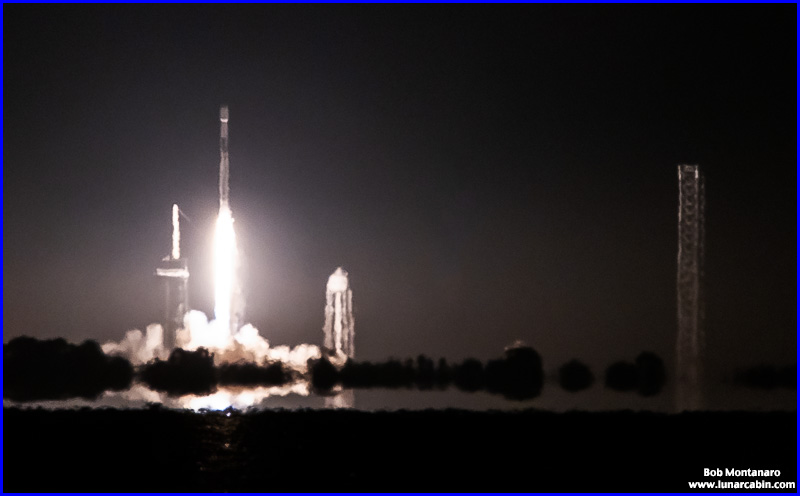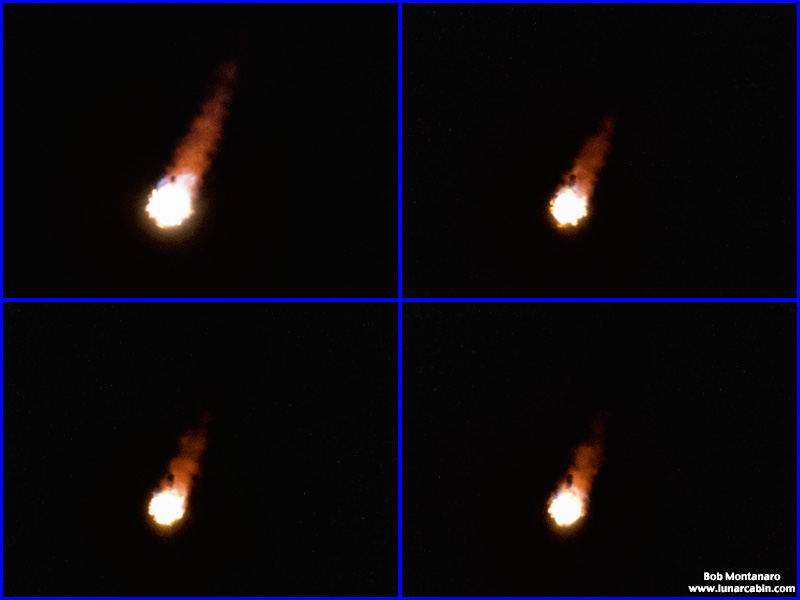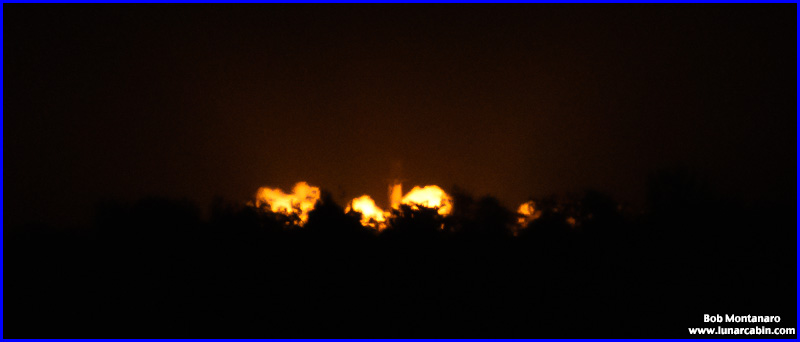 |
|
IM-1 NOVA-C (Falcon 9) 15 February 2024 |
Launch Complex 39A Kennedy Space Center |
A SpaceX Falcon 9 rocket launched the Intuitive Machines IM-1 mission sending the Odysseus lunar lander to a lunar transfer orbit from Launch Complex 39A (LC-39A) at Kennedy Space Center at 1:05 a.m. on 15 February 2024. Approximately two and a half hours prior to liftoff, teams loaded the lunar lander with cryogenic methane and oxygen on the pad ahead of stepping into propellant load for Falcon 9. Following stage separation, the first stage landed on Landing Zone 1 (LZ-1) at Cape Canaveral Space Force Station. This is the 18th flight of the first stage booster supporting this mission, which previously launched GPS III-3, Turksat 5A, Transporter-2, Intelsat G-33/G-34, Transporter-6, and 12 Starlink missions. |
|
 |
|
 |
|
 |
|
 |
|
 |
|
 |
|
 |
|
 |
|
 |
|
 |
|
GIF of the first stage, seen at upper left, boostback burn as the second stage, below right, continues on into orbit. |
|
 |
|
Second stage heading to orbit. |
|
 |
|
First stage entry burn. |
|
 |
|
 |
|
 |
|
Touchdown at Landing Zone 1. |
|
 |
|
EXCERPTS FROM AN INTUITIVE MACHINES MEDIA RELEASE |
|
 |
|
Rendering of IM-1 on the surface of the Moon. IMAGE CREDIT: Intuitive Machines |
|
INTUITIVE MACHINES IS ATTEMPTING TO BECOME ONE OF THE FIRST COMMERCIAL COMPANIES TO LAND SOFTLY ON THE LUNAR SURFACE. IM-1 is a trailblazing mission aimed at creating a commercial lunar economy, delivering commercial payloads and NASA science and technology payloads that will pave the way for a sustainable human presence on and around the Moon. The mission aims to be the first U.S. vehicle to softly land on the lunar surface since Apollo 17 in 1972. Intuitive Machines selected SpaceX to launch the Company’s Nova-C class lunar lander, named Odysseus, on a SpaceX Falcon 9 rocket from NASA Kennedy Space Center’s Pad 39A. After launch, Odysseus is planned to separate from the Falcon 9 rocket on a direct trajectory to the Moon. Intuitive Machines flight controllers working from Nova Control in Houston, Texas, expect Odysseus to land on the Moon approximately nine days after liftoff. After touchdown, Intuitive Machines and its customers expect to operate payloads on the lunar surface for roughly seven days before the lunar night sets on the south pole of the Moon, rendering Odysseus inoperable. |
|
EXCERPT FROM A NASA MEDIA RELEASE |
|
A suite of NASA science instruments and technology demonstrations is on the way to our nearest celestial neighbor for the benefit of humanity. Through this flight to the Moon, they will provide insights into the lunar surface environment and test technologies for future landers and Artemis astronauts. At 1:05 a.m. EST on Thursday, Intuitive Machines’ Nova-C lander launched on a SpaceX Falcon 9 rocket from Launch Complex 39A at the agency’s Kennedy Space Center in Florida. At approximately 1:53 a.m., the lander deployed from the Falcon 9 second stage. Teams confirmed it made communications contact with the company’s mission operations center in Houston. The spacecraft is stable and receiving solar power. These deliveries are part of NASA’s CLPS (Commercial Lunar Payload Services) initiative and Artemis campaign, which includes new solar system science to better understand planetary processes and evolution, search for evidence of water and other resources, and support long-term human exploration. “NASA scientific instruments are on their way to the Moon –a giant leap for humanity as we prepare to return to the lunar surface for the first time in more than half a century,” said NASA Administrator Bill Nelson. “These daring Moon deliveries will not only conduct new science at the Moon, but they are supporting a growing commercial space economy while showing the strength of American technology and innovation. We have so much to learn through CLPS flights that will help us shape the future of human exploration for the Artemis Generation.” While enroute to the Moon, NASA instruments will measure the quantity of cryogenic engine fuel as it is used, and during descent toward the lunar surface, they will collect data on plume-surface interactions and test precision landing technologies. Once on the Moon, NASA instruments will focus on investigating space weather/lunar surface interactions and radio astronomy. The Nova-C lander also will carry retroreflectors contributing to a network of location markers on the Moon for communication and navigation for future autonomous navigation technologies. NASA science aboard the lander includes:
Intuitive Machines’ Nova-C-class lunar lander, named Odysseus, is scheduled to land on the Moon’s South Pole region near the lunar feature known as Malapert A on Thursday, Feb. 22. This relatively flat and safe region is within the otherwise heavily cratered southern highlands on the side of the Moon visible from Earth. Landing near Malapert A will also help mission planners understand how to communicate and send data back to Earth from a location where Earth is low on the lunar horizon. The NASA science aboard will spend approximately seven days gathering valuable scientific data about Earth’s nearest neighbor, helping pave the way for the first woman and first person of color to explore the Moon under Artemis. |
|
IM-1 NOVA-C MISSION PATCH |
|
 |
|
IMAGE CREDIT: Intuitive Machines |
|
All contents copyright Lunar Cabin |
|